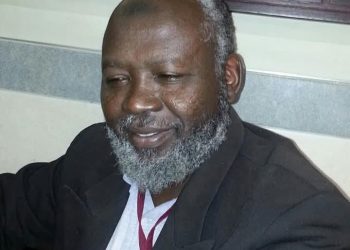Prostration of Forgetfulness (Sajdah Sahw) Explained
Ibn Mas’ood, may Allaah be pleased with him, that the Prophet (peace be upon him) prayed either an extraneous addition or missed an essential part of the prayer (one of the narrators of the hadeeth was in doubt which). After saying ‘salaam,’ it was said to him, “Oh Prophet of Allaah, has there been a new change in [the way of performing] the prayer?” He replied, “Why [would you say that]?” They responded, “You prayed in such and such manner.” So he bent his legs and faced towards the qiblah and performed two prostrations then performed tasleem (saying ‘salaam’ to the right then the left). After facing towards us, he said, “If something new had been introduced regarding the prayers, I would have informed you about it. To the contrary, I am but a human like you—I forget as you forget, so if I forget, remind and inform me. If any of you doubts during his prayer then he should try to discern the more certain and correct case, then complete the prayer based upon it, then perform tasleem, followed by two prostrations.” (Al-Bukhari).
There instances during Salaat that we may forget something during Salaat such that we end up in ommitting or adding something to it that may invalidate the prayer. In order to atone this, our beloved Prophet Muhammad (Peace be upon him) taught Muslims to perform two prostrations at the end of the prayer. These two prostrations are called Sajda Sahw or Prostration of Forgetfulness.
There are three main occassions in which these prostartions become Waajib (obligatory) and these are: –
1. Having added something to the Salaat – An example is where say in a Maghreb salaat instead of praying three rakaats you have prayed four. Or conversely, Instead of praying the required rakaats you have prayed less (this is counted as an addition to the prayer since it was not prescribed to be prayed as such) and assumed that you have actually completed the prayer.
Under this instance, if one has remembered the addition before saying salaam, then one should recite at-tahiyyaat only, say ‘Allahu Akbar’ and perform the two prostrations, thereafter, recite the at-tahiyyaat again and the durood and make the final two salaams.
However, if one has remembered the addition after saying salaam, then one say ‘Allahu Akbar’, perform the two prostrations and again complete the prayer.
‘Abdullaah ibn Mas’ood (May Allâh be pleased with him) said that, the Prophet (peace be upon him) prayed Dhuhr with five rak’ahs, so someone said, ‘Has increase been made in the prayer?’ So he replied ‘And why is that?’ They said, ‘You have prayed five (rak’ahs).’ So he performed two prostrations after having given the salutation…’ and in a narration (there occurs), ‘…..so he turned his feet and faced the Qiblah and performed two prostrations, then he gave the Salutation.’ Reported by the whole group.
Abu Hurayrah (May Allâh be pleased with him) said that, ‘The Prophet (peace be upon him) lead them in the Dhuhr prayer or the ‘Asr prayer and gave the salutation after two rak’ahs. Then he departed quickly from one of the doors of the mosque, and the people were saying that the prayer had been decreased. The prophet (peace be upon him) meanwhile, stood by a piece of wood placed in the mosque, leaning against it, as if he was angry. So a man stood and said, ‘O Messenger of Allaah, have you forgotten or has the prayer been reduced?’ So the Prophet of Allaah (peace be upon him) said, ‘I did not forget nor has it been reduced.’ So the man said, ‘Rather you have indeed forgotten.’ So the Prophet (peace be upon him) said to the Companions, ‘Is what he is saying true?’ They said ‘Yes’ So the Prophet (peace be upon him) went forward and prayed what remained of the prayer, then he gave the salutation, then he prostrated twice, then he gave the salutation.’ [Agreed Upon]
2. Ommission of the pillars of Salaat – If anyone forget and ommits performing any pillar of Salaat or any obligatory act of the Salaat then his/her prayer is nullified. An example is when one forgets to recite Surah Fateh or one proceeds to go for a third rakaat without saying Attahiyaat.
If one remembers the ommission before he/she proceeded to the next obligatory act, then make it up immediately. During the last tas-shahhud, he/she should recite at-tahiyyaat only, say ‘Allahu Akbar’ and perform the two prostrations, thereafter, recite the at-tahiyyaat again and the durood and make the final two salaams.
However, if one remembers the ommission after reaching another pillar, then one should proceed with the prayer without going back to it, then recite at-tahiyyaat only, say one salaam to the right, say ‘Allahu Akbar’, perform the two prostrations recite the at-tahiyyaat again and the durood and make the final two salaams.
‘Abdullah ibn Buhaynah (May Allâh be pleased with him) said that, ‘The Prophet (peace be upon him) led them in Dhuhr prayer. He stood after the first two rak’ah and did not sit (meaning for the first tashahhud), so the people stood along with him. Then when it came to the completion of the prayer and the people awaited his salutation, he said takbeer whilst sitting and performed two prostration before giving the salutations. Then he gave the salutation.’ (Al-Bukhari)
3. Doubting on the performance of the conditions of Salaat – Doubting as to which one you have performed, e.g. more or less rakaats. Or if you have joined late in the prayer, you are not sure as to whether you have actually joined the Imaam in the particular rakaat or not.
Preference should be given to the one in which, althought in doubt, one is more certain that the other. The more certain thought should be considered as the true position of the act of the prayer.
In the case where one is not sure, then he/she should act upon the lesser of the two.
Related Abu Sa’eed Al-Khudri, may Allaah be pleased with him, in which he said: the Prophet (peace be upon him) said, “If any of you doubts during his prayer and he does not know how many [raka’aat] he has prayed, whether it is three or four, then he should discard and cast away his doubt. He is to continue upon what one is sure of [i.e. the lesser] then perform two prostrations before making tasleem. If he ends up [in reality] praying five [raka’aat], then his prayer will be an intercession for him; and if he ends up completely the [requisite] four [raka’aat] then it is targheeman for shaytaan.” (targheeman: i.e., a way of vexing Satan and humiliating and debasing him, as well as rejecting him as a result of his failure to achieve his desire of disturbing the worshipper.) (Al-Nawawi in explaining the hadeeth from Sahih Muslim, 5/60) (Al-Bukhari)
Narrated Salama bin ‘Alqama: I asked Muhammad (bin Sirin) whether Tashah-hud should be recited after the two prostrations of Sahw. He replied, “It is not (mentioned) in Abu Huraira’s narration . “
One should however be mindful when praying before an Imaam since the Prophet Muhammad (peace be upon him) advised the Muslims to follow and not differ with the Imaam.
This means that if the Imaam has done an act that necessitates the performing of Prostration of Forgetfulness and he performs it, then the faithfuls have an obligation to follow him. If however, he completely forgets the prostration of forgetfulness and he rises from his position, his followers have a duty to remind him as narrated elsewhere in the ahadeeth quoted above.
SOME OF THE PILLARS AND OBLIGATORY ACTS OF SALAAT
The obligatory acts that are to be performed before so that the Salaat becomes valid are: Cleanse from unseen moral (Hadath) impurities. Cleanse from visible (Najis) impurities that includes oneself, clothes and place for prayer. Covering of private parts. Facing the direction of the Qiblah. Praying at the correct time of the prayer. The intention to pray the prayer at the particular time.
The Pillars of Salaat are: The Opening Allahu Akbar (- Iftitahu Takbir), Standing (- Qiyam), Recitation of Quran (Qiraat), Bowing (- Ruku), Prostration (- Sujud) and the Final Sitting (Jalsa).
And Allah knows best…
For further, more informative reading : –
1. http://www.sunnahonline.com/ilm/sunnah/0034.htm
2. http://spa.qibla.com/browse.asp?ToDo=browse&id=3&catId=380 (Shafi School)
3. http://qa.sunnipath.com/browse.asp?ToDo=browse&id=1&catId=140 (Hanafi School)




















